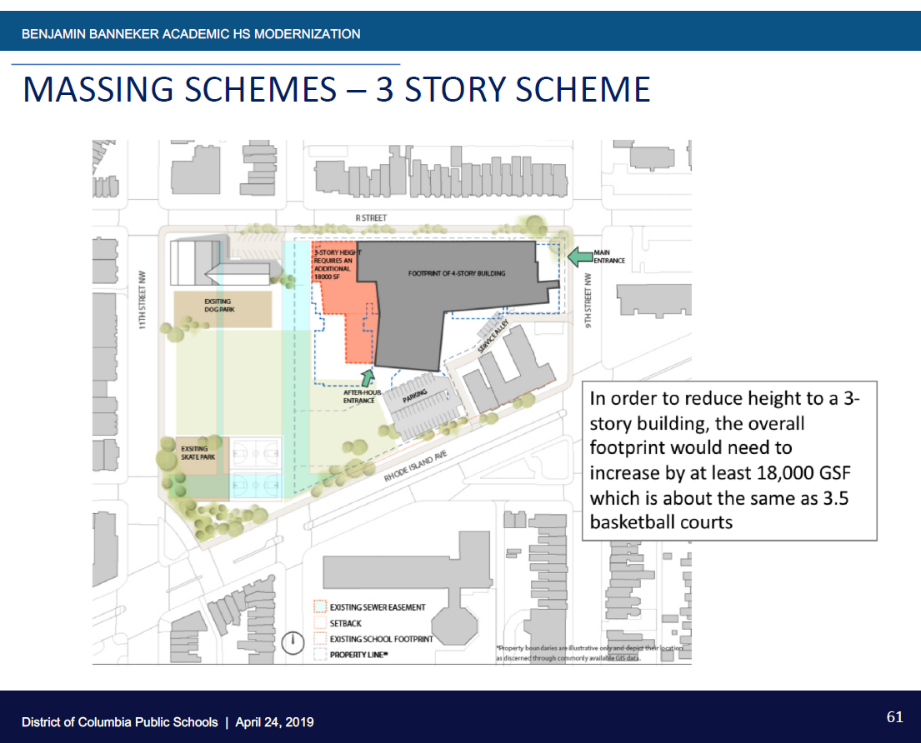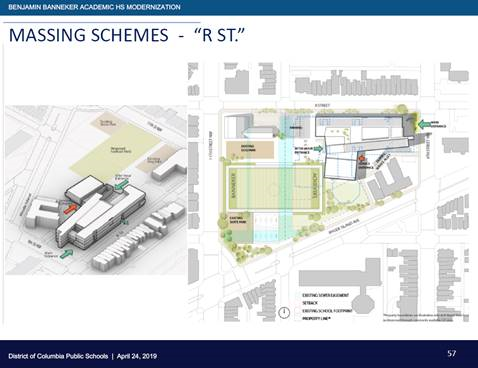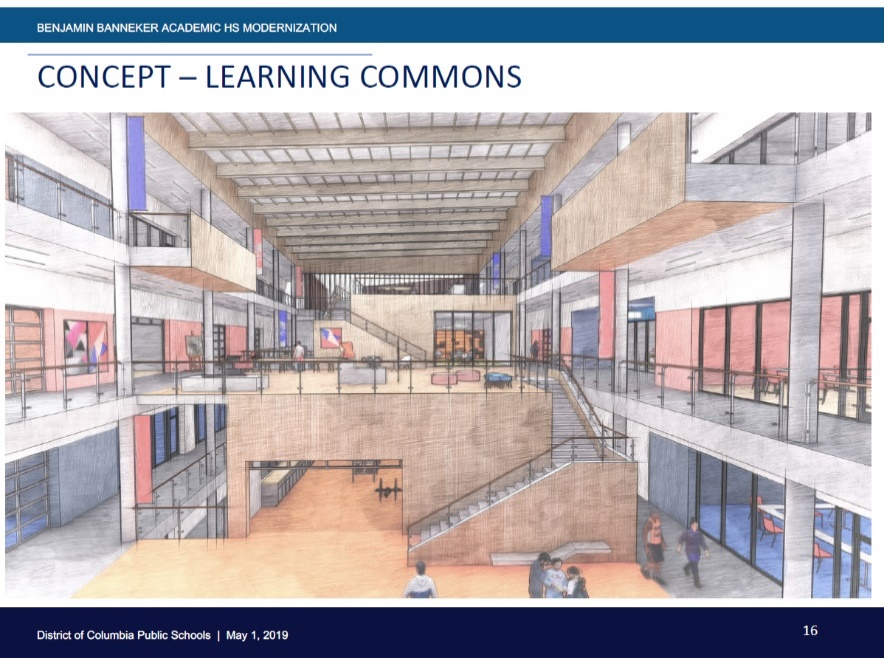It is clear from the preliminary Banneker High School concepts now available (April 24th, and May 1st) that an 800 student high school doesn’t fit on the Shaw site and meeting the program requirements for Banneker will be far better on its current site. Here is why:
Building Massing Problems: The concept design concludes that for energy efficiency, the best orientation has the long façade of classrooms facing R Street. Unfortunately, this also maximizes the impact of the proposed 4-story classroom block–dwarfing the two and three-story row houses across the narrow R Street. This scheme has the high school building 12 feet higher than the current Shaw building. Anticipating objections to this, the design team has proposed a set-back of the 4th story to reduce height on R Street, but which requires a larger foot print (in orange on 3 STORY SCHEME) and even less outdoor space to regain the classroom space lost in the 3 story scheme.

Site Problems: Squeezing the exterior space requirements of an 800-student secondary school on a compact DC Rec site that is already programmed with a basketball court, skate park, dog park and multi-purpose field presents obvious problems. The high school football field in MASSING SCHEMES – “R” ST.” has so little space beyond the regulation field that it is likely to be unfeasible since it lacks necessary space for fencing, end-zones, and seating space for teams or spectators. Further, circulation around and through the rest of the Rec Center would be impeded if there is fencing.

Interior Design Problems: The 4-story school design makes it difficult to get daylight to the central program areas. This open plan concept repeats many of the design flaws of the Old Shaw Jr. High School that is being replaced. Further, without a well-considered educational specification specifically for Banneker the school is planned without a library/media center but instead relies on nearly a dozen smaller spaces, apportioned on the top three floors.

The whole presentation can be found at the DCPS Banneker Modernization page; see slides pp. 57, 58.

No Comments